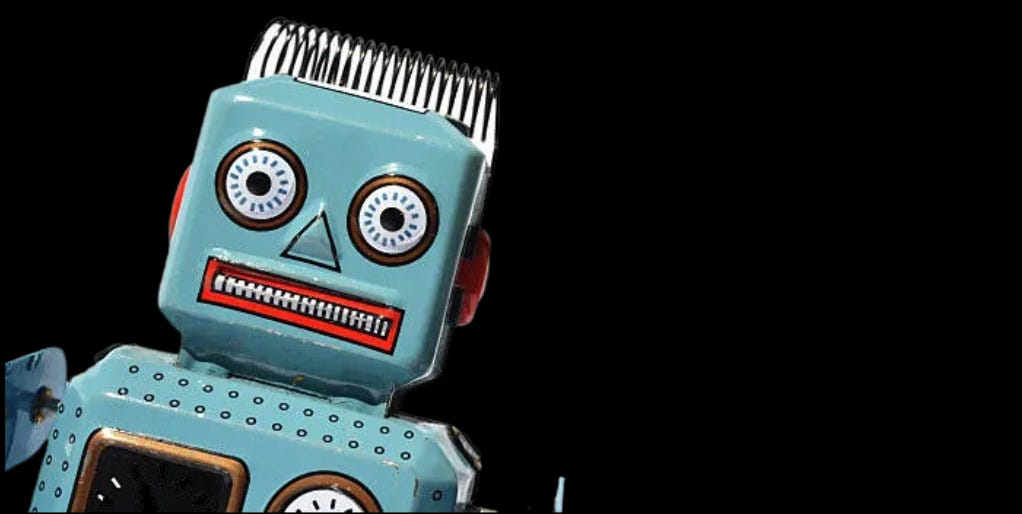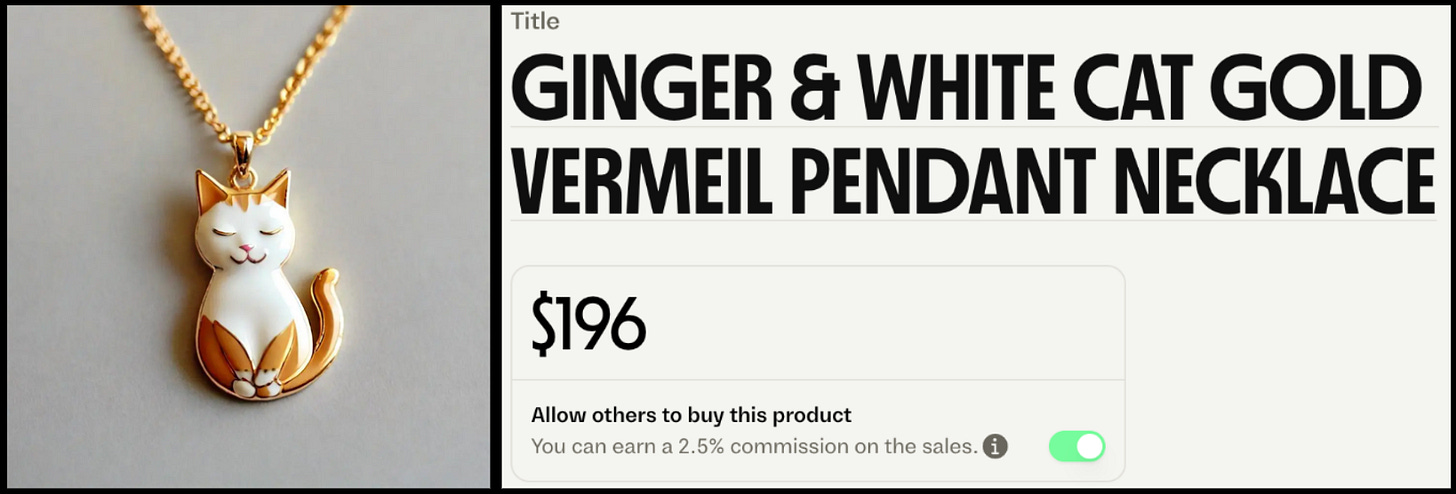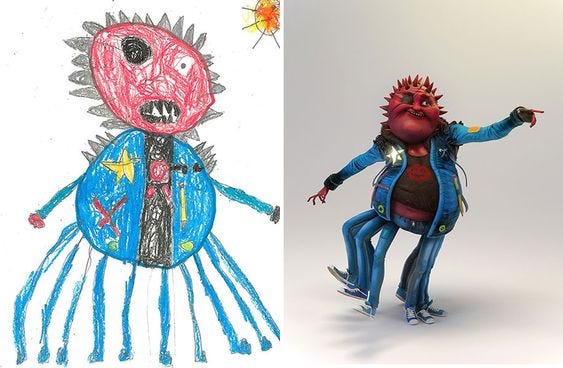For every oversaturated glossy cartoon-like image of a crocodile with wings and a Pope in a puffer jacket, flooding platforms such as Facebook –leaving unwitting Boomers in their wake – there is a truly impressive creation prompted into Midjourney’s Discord server.
The pace of change is unrelenting. We started seeing Gen AI videos almost two years ago, and although early creations frequently involved seven-limbed dogs and face-melting versions of humans playing tennis with five bendy legs, the technology was – and is – incredible. If not for its immediate use then for its potential.
Gen AI models have improved considerably. Recently I’ve been served numerous videos with content made using the new Runway Act One model, which turns live-action recordings into full-blown animations, with synced audio.
Highly impressive and immersive as this is, it remains in two dimensions. Only visible through a screen. Perhaps the technology could become an interactive screen in a store window, where passers by morph into characters from the latest film release, or a shareable video that can be projected onto a wall. But as much fun as it will be to play with this technology, it can only have minimal crossover with how people experience the physical world.
But what if AI could be used to generate physical objects?
In 1983, American engineer Chuck Hull invented stereolithography, using UV lasers to form 3D shapes from resin, marking the birth of 3D printing. For decades, the technology remained on the fringes due to high costs and complexity but in 2009, key patents expired, allowing enthusiasts and hobbyists to explore 3D printing without costly licenses. The availability of powerful home computers, compact printers, and new materials fueled widespread adoption and expanded its applications.
3D printing has already been industrialised. Everything from spacecraft components to earphones and even dental implants can be printed. The application for 3D printing in housing is fascinating. Although estimated to be 30% faster and cheaper to produce, in 2023, only about 100 out of 1.2 million completed homes in the US were made with a 3D printer.
In the 1940s and 1950s, there was huge demand for housing and temporary accommodation in post-war Britain and the US, with thousands made. Manufactured off-site and quickly assembled in-situ, pre-fabs were a modern marvel at the time, and today at the premium end of the market HUF Haus is the gold standard.
Fast-forward to the 2020s and there is still demand for mass-produced, quick-to-assemble and affordable housing. The crisis may be of a different kind (in the UK and US at least), and so too is the technology available. Housing and large scale engineering projects are inspIring, and somewhat dystopian - if like me your mind wanders off into War of the Worlds and Archigram walking machinery territory.
The combination of 3D printing being available to small-scale manufacturers, producers and crafters with Generative AI Manufacturing opens up a world of possibilities.
Could we simply prompt a product into existence?
The startup, Arcade Studio, is asking this question. Launching in September 2024, the company is an intermediary between ‘dreamers’ and ‘makers’. With its “turn your thoughts into things” tagline, the idea is to simply prompt a text box with a product idea such as ‘a necklace in the shape of a ginger and white cat’ and images of the imagined product appear.
My cat Jasper as jewellery interpreted by Arcade Studio
Rather than remaining in 2D, these images are available to turn into and buy as 3D products. Through '"‘Generative Product Creation’ (Gen PC), users can simply click ‘edit and buy’, adjust the size, material, or generate alternative versions. Arcade has pre-qualified that items falling within certain constraints can be produced and shipped by a network of makers. Intriguingly, it's possible for ‘dreamers’ to allow others to buy their creations and earn a commission on sales. It would be logical to also use Generative AI to create a product video to post on socials, and to target potential buyers. When AI Agents are introduced, it's pretty much an end-to-end system.
At this beta stage, the service is limited to a few products (necklaces, rings, charms bracelets), however, its potential is huge. The service, admirably, connects people with ‘skilled independent craftspeople’ and states “we believe AI can never replace artisan craftsmanship—but it can make your work even more magical”.
Imagine this with a wider array of makers. Perhaps you want to create a bespoke phone case in the shape of a pint of Guinness, perhaps you want to create a bottle opener in the shape of a pig, or some over-ear headphones that resemble dragon wings. The ability to use Generative AI to quickly produce personalised products could be a huge development, both for consumers and brands. And consumers are hungry for it. Fuelled by nostalgia and by the desire to develop their IRL identities, young people are customising their phones - which are about as non-descript as is possible - adapting accessories such as earphones, and going all in on branded merchandise.
Usually, branded merchandise is bound by minimum orders. However, open-sourcing a brand playbook for consumers to spin up their own product versions would get around this issue. Nike ID (later Nike By You) has enabled customers to customise shoes since 1999, and more recently Reebok incorporated Generative AI into Instagram DMs to enable users to customise shoes.
One interesting way this could develop is with entertainment brands. We’ve all seen the crazy, unhinged monster drawings kids come up with.
Image: Demilked via Pinterest
Until now, these drawings have ended up attached with a magnet to a fridge door - at best. With the use of Gen AI, parents could take a photo of their kids drawing, and use a tool like Arcade Studio to produce a plushy toy that looks exactly like their drawing. Surely that would be better than any other present the kid got on Christmas Day?
TikTok has recently begun connecting manufacturers with creators in order to help them make goods to sell. This will enable creators to leverage their creativity and audience, leading to bigger payouts, following the likes of Mr Beast and Emma Chamberlain, KSI and Logan Paul.
As Netflix explores in its brand new documentary “Buy Now! The Shopping Conspiracy”, unarguably the world doesn’t need to be producing more crap. Many products end up in landfill and the environmental impact is horrendous. Optimistically, it seems that if there is an uptick in the amount of stuff produced using this technology, then perhaps we’ll also be creating less stuff we don’t want, and more stuff we do.




